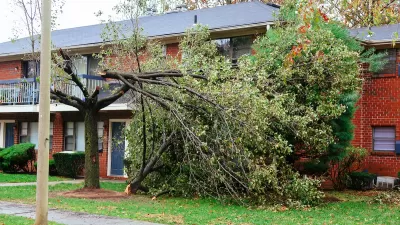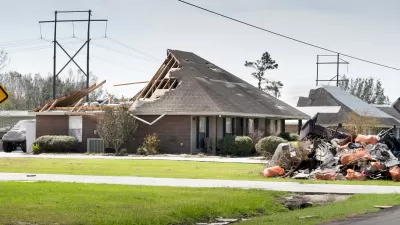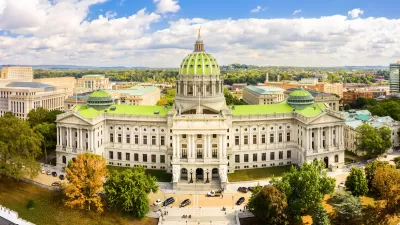Abandoned factories litter the landscapes of cities and towns throughout the Rust Belt. A new paper proposes an innovative solution to help prevent vacant buildings from plaguing a community before a building is ever constructed.
"Buildings crumble much less easily than the companies inside them do. And because of this reality, whole communities, particularly in the industrial Midwest, are littered with ghostly manufacturing plants that once produced automobiles, or the parts that went into them, or the components of those parts," writes Emily Badger.
Many communities have been successful in utilizing tax credits, grants, and private investment to reuse these legacy assets, but Rex LaMore and Michelle LeBlanc, at Michigan State University, have proposed [PDF] a solution that would use property insurance to "force companies to financially plan for a property's end-game" from the start.
"LaMore envisions that an entirely new industry could form around commercial property insurance and deconstruction, with some interesting consequences," adds Badger. "Insurers would be motivated to keep close tabs on the condition of properties and what goes on inside of them. Irresponsible companies and the dirty industries most likely to leave a mess at the end of the day would have higher insurance premiums. The whole system, LaMore suggests, might even prompt the development of new building techniques or materials that leave a lighter footprint on the land."
FULL STORY: A Remarkably Simple Idea to End the Cycle of Abandoned Factories

Planetizen Federal Action Tracker
A weekly monitor of how Trump’s orders and actions are impacting planners and planning in America.

San Francisco's School District Spent $105M To Build Affordable Housing for Teachers — And That's Just the Beginning
SFUSD joins a growing list of school districts using their land holdings to address housing affordability challenges faced by their own employees.

The Tiny, Adorable $7,000 Car Turning Japan Onto EVs
The single seat Mibot charges from a regular plug as quickly as an iPad, and is about half the price of an average EV.

Seattle's Plan for Adopting Driverless Cars
Equity, safety, accessibility and affordability are front of mind as the city prepares for robotaxis and other autonomous vehicles.

As Trump Phases Out FEMA, Is It Time to Flee the Floodplains?
With less federal funding available for disaster relief efforts, the need to relocate at-risk communities is more urgent than ever.

With Protected Lanes, 460% More People Commute by Bike
For those needing more ammo, more data proving what we already knew is here.
Urban Design for Planners 1: Software Tools
This six-course series explores essential urban design concepts using open source software and equips planners with the tools they need to participate fully in the urban design process.
Planning for Universal Design
Learn the tools for implementing Universal Design in planning regulations.
Smith Gee Studio
City of Charlotte
City of Camden Redevelopment Agency
City of Astoria
Transportation Research & Education Center (TREC) at Portland State University
US High Speed Rail Association
City of Camden Redevelopment Agency
Municipality of Princeton (NJ)





























